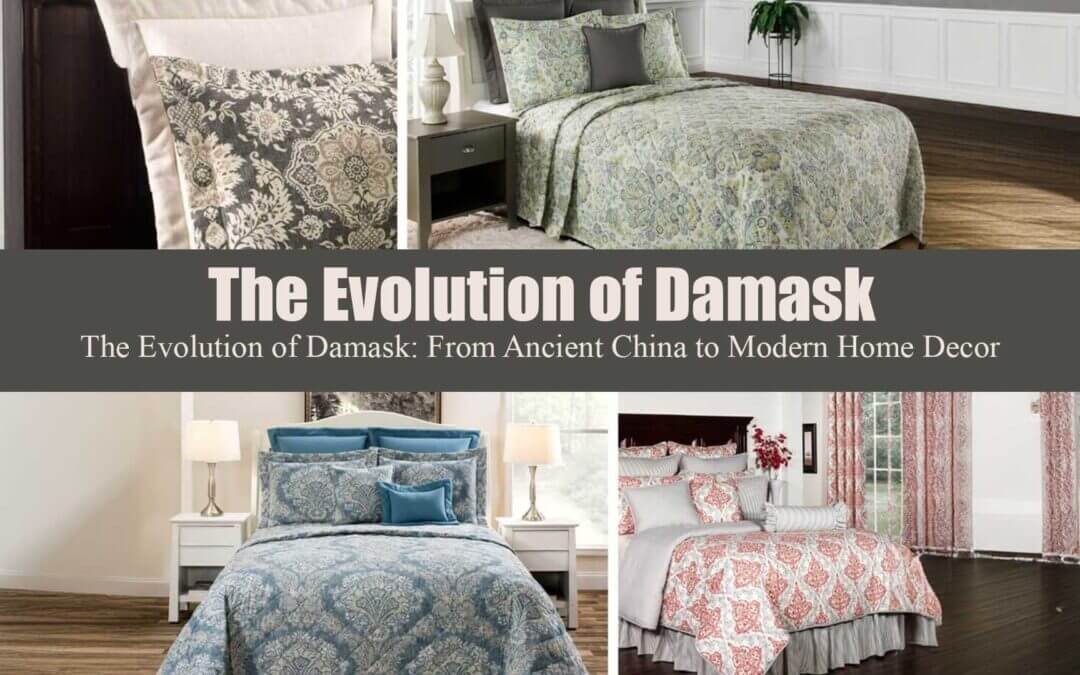Origins and Spread
Damask textiles trace their origins back to ancient China, circa 300 BC. Initially crafted with intricate patterns and luxurious materials, these fabrics quickly garnered attention for their elegance and sophistication. The technique of weaving damask gradually made its way westward. Reaching prominence in the Middle Ages, particularly in the Middle East. Named after the famed Silk Road trading city of Damascus, Syria, damask textiles became synonymous with luxury and refinement. For an in-depth exploration of damask’s history and its evolution from ancient China to modern home decor, “The History of Damask Textiles: 2,000 Years of Elegance” on The Memo by Schumacher1
Weaving Technique and Characteristics
Originally woven with silk, damask evolved to encompass a variety of fibers. Traditionally, damask features a single color in both the warp and weft. Woven on draw looms, the fabric’s ground exhibits a warp-faced satin structure, while the pattern showcases weft-faced structures. This interplay of textures creates a distinctive luster, a hallmark of damask. Notably, damask fabrics are reversible, further adding to their allure.
Classic Designs and Motifs
European damask designs often incorporate stylized floral motifs, acanthus leaves, and feathers. These motifs typically adorn the fabric in a framed, half-drop layout, lending a sense of symmetry and sophistication to the design. However, the versatility of damask allows for a myriad of design possibilities, ranging from classic motifs to contemporary patterns.
Evolution and Adaptation
In the early 20th century, print designers began to emulate the look of damask through printing techniques, offering more affordable alternatives to traditional woven damask. These printed designs retained the elegance and charm of their woven counterparts while catering to a wider audience.
Enduring Appeal
Damask textiles continue to hold a prominent place in home furnishing and fashion. Their timeless elegance and versatility ensure that they remain a staple in interior decor and apparel, evoking a sense of luxury and refinement wherever they are used. From draperies to upholstery, damask fabrics lend an air of sophistication to any space, making them a perennial favorite among designers and homeowners alike. Damask’s enduring allure persists, making it a timeless choice for enhancing interior spaces.
Damask Patterns | Traditional Bedding Categories | Exploring Textile History and Design
Saved Boards On Pinterest | YouTube Channel
Interested in reading more articles like this? Check them out here:


